Ancient Aircraft
2010 ... The search for clues to humanity's creation is often linked to ancient astronauts who came here in the beginning in Flying Vehicles, leaving behind clues to their encounters with humans. Pictographs and megalithic monuments throughout the planet describe human interaction with ancient astronauts, allowing those in our timeline to piece together what happened in the past that shape out destiny today.
Did these ancient astronauts have flying ships, some of which were flown by humans? In the inserts of our consciousness reality program, all things are possible, as we await explanation of our creation and where it is all going. Today many report UFO sightings, many believe aliens exist and in same way interact in our program, if only for biogenetic experiments, mirroring the Nazi Program of WW II, which ended as the alien Grey program began.
Vimanas
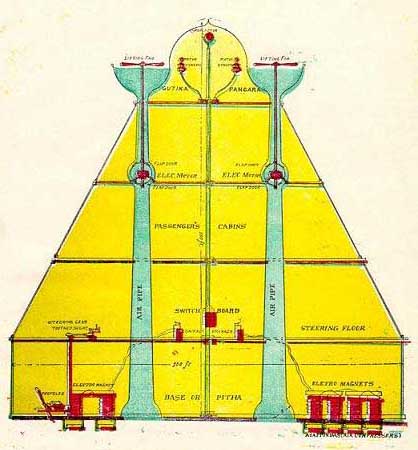
A vimana is a mythological flying machine, described in the ancient mythology of India. References to these flying machines are commonplace in ancient Indian texts, even describing their use in warfare. As well as being able to fly within Earth's atmosphere, vimanas were also said to be able to travel into space and travel submerged underwater.
Descriptions in the Vedas and later Indian literature detail vimanas of various shapes and sizes:
- In the Vedas: the Sun and Indra and several other Vedic deities are transported by flying wheeled chariots pulled by animals, usually horses (but the Vedic god Pusan's chariot is pulled by goats).
- The "agnihotra-vimana" with two engines. (Agni means fire in Sanskrit.)
- The "gaja-vimana" with more engines. (Gaja means elephant in Sanskrit.)
- Other types named after the kingfisher, ibis, and other animals.
- An area of land measured out and set apart to be used for sacred purposes.
- Temple
- A god's palace
- In the Ramayana: the demon-lord Ravana's flying palace called Pushpaka.
- In later Indian writings: other flying vehicles, and sometimes as a poetic word for ordinary ground vehicles.
In some modern Indian languages, the word vimana means ordinary real aircraft.
The Buddhist book Vimanavatthu (Pali for "Vimana Stories") uses the word "vimana" with a different meaning: "a small piece of text used as the inspiration for a Buddhist sermon".
Some modern UFO enthusiasts have pointed to the Vimana as evidence for advanced technological civilizations in the distant past, or as support for the ancient astronaut theory. Others have linked the flying machines to the legend of the Nine Unknown Men.
Alexander the Great purportedly gave a description of "dozens of silver disk-like objects" entering and leaving the Jaxartes River in 337 BC. Alexander, so the story goes, then became obsessed with the craft and spent many hours in a primitive diving bell searching for them. (Source: History Channel "Unidentified Submarine Objects")
Sanskrit texts are filled with references to gods who fought battles in the sky using Vimanas equipped with weapons as deadly as any we can deploy in these more enlightened times.
In the Ramayana there is a passage in the Ramayana which reads:
"Pushpaka" is Sanskrit for "flowery". It is the first flying vimana mentioned in Hindu mythology (as distinct from gods' flying horse-drawn chariots). It is also called Pushpaka Vimana.
The special characteristic of this vehicle is, "What ever may be the number of people sitting in it, always there will be one more seat vacant i.e., If N people sit, There will be (N+1) seats". It was basically a vehicle that could soar the skies for long distances. It shows that even in ancient times, people were curious about flight and might have tried to design flying vehicles.
Pushpaka was originally made by Maya for Kubera, the God of wealth, but was later stolen, along with Lanka, by his half-brother, the demon king Ravana.
The core epic of the Mahabharata mentions no vimanas, but vimanas often occur in the large amount of matter which was added to the Mahabharata corpus later. One example is that the Asura Maya had a Vimana measuring twelve cubits in circumference, with four strong wheels.
The Mahabharata is a veritable gold mine of information relating to conflicts between gods who are said to have settled their differences apparently using weapons as lethal as those we have now. Apart from 'blazing missiles', the poem records the use of other deadly weapons. 'Indra's Dart' (Indravajra) operated via a circular 'reflector'. When switched on, it produced a 'shaft of light' which, when focused on any target, immediately 'consumed it with its power'.
In one exchange, the hero, Krishna, is pursuing his enemy, Salva, in the sky, when Salva's Vimana, the Saubha, is made invisible in some way. Undeterred, Krishna immediately fires off a special weapon: "I quickly laid on an arrow, which killed by seeking out sound". Many other terrible weapons are described, quite matter-of-factly, in the Mahabharata, but the most fearsome of all is the one used against the Vrishis. The narrative records:
It is important to note, that these kinds of records are not isolated. They can be cross-correlated with similar reports in other ancient civilizations. The after-affects of this Iron Thunderbolt have an ominously recognizable ring. Apparently, those killed by it were said to be so burnt that their corpses were unidentifiable. The survivors fared little better, as it caused their hair and nails to fall out.
Perhaps the most disturbing and challenging, information about these allegedly mythical Vimanas in the ancient records is that there are some matter-of-fact records, describing how to build one. In their way, the instructions are quite precise.
The Mahabharata also tells of the awesome destructiveness of the war: "... (the weapon was) a single projectile charged with all the power of the Universe. An incandescent column of smoke and flame as bright as the thousand suns rose in all its splendour... An iron thunderbolt, a gigantic messenger of death, which reduced to ashes the entire race of the Vrishnis and the Andhakas.... the corpses were so burned as to be unrecognizable. The hair and nails fell out; pottery broke without apparent cause, and the birds turned white.... after a few hours all foodstuffs were infected.... to escape from this fire, the soldiers threw themselves in streams to wash themselves and their equipment..." Some say that the Mahabharata is describing an atomic war. References like this one are not isolated; but battles, using a fantastic array of weapons and aerial vehicles are common in all the epic Indian books. One even describes a Vimana-Vailix battle on the Moon! The above section very accurately describes what an atomic explosion would look like and the effects of the radioactivity on the population. Jumping into water is the only respite.
In the Sanskrit Samarangana Sutradhara (Literally, "controller of the battlefield"), it is written:
In Mesopotamian sources -- The Hakatha (Laws of the Babylonians) states quite unambiguously:
More fantastic still is the information given in the ancient Chaldean work, The Sifrala, which contains over one hundred pages of technical details on building a flying machine. It contains words which translate as graphite rod, copper coils, crystal indicator, vibrating spheres, stable angles, etc.
Some say that when the Rishi City of Mohenjodaro was excavated by archaeologists in the last century, they found skeletons lying in the streets, some of them holding hands, as if some great doom had suddenly overtaken them. These skeletons are among the most radioactive ever found, on a par with those found at Hiroshima and Nagasaki.
Ancient cities whose brick and stonewalls have been vitrified, that is, fused together, can be found in India, Ireland, Scotland, France, Turkey and other places. Some say that there is no logical explanation for the vitrification of stone forts and cities, except from an atomic blast; but others say that vitrified forts arose by an enemy setting fire to a fortification composed of a mixture of big timbers and stones.
The Yantra Sarvaswa of Maharshi Bharadwaja, Vimaana Chandrika of Maharshi Narayan, Vyoma Yaana Tantra of Sounaka, and Vyoma Yaanarka of Dandi Natha are some of them. They contained topics like Maargadhi Karana (Navigation and control of speed during flight), Lohaadhi Karana (alloys used for various components of the aircraft) and Saktyaadhi Karana (production and usage of various fuels used in aircraft).
Para Sabda Grahakata is a subject of monitoring the flight tracks of aircraft, navigatory communication system, and monitoring the conversation of the pilots in the aircraft. Maharshi Gouthama mentioned 32 models of aircraft used in Treta Yuga; only one model among them, called Pushpaka Vimaanam, became popular in the Ramayana. The Vaimaanika Sastra describes Tripura Vimaanam that uses a solar powered engine to travel at three levels - on the land, under the surface of water, and in the air. Sakuna Vimaanam is a cross between an aircraft and a rocket - a space shuttle.
A symposium on "Science and Technology in ancient India" was organised in December 1990 at B.M. Birla Science Center at Hyderabad, A.P., India. Many topics of ancient Indian aeronautics were discussed. The Vaimanika Prakaranam in Vimana Vignana deals with instruments like Guha Garbha Darsha Yantra which can locate objects hidden underground from an aircraft. A semiconductor ferrite named Chumbaka radiates microwave signals and detects hidden objects.
The B.M. Birla Scienc Center has been doing active research in finding scientific content in Vedas and Puranas. The Center has deciphered a number of new materials from Amsu Bodhini. These materials comprise of glasses with special effects and metallic alloys with rare combinations - many of them have extraordinary properties unknown to modern technology. Unlike the modern methods which use 'inert' materials, these materials required 'live' ingredients like herbs, tree barks, and tree gums in addition to mineral ores. The sastras had integrated the knowledge of many conventional disciplines like chemistry, materials science, metallurgy and Ayurveda. These materials were widely used in the manufacture of aircraft in ancient India. Some of them can be used in low cost solar energy generation systems needed for India.
Dr. Roberto Pinotti, an Italian scientist, presented a paper on 'Aeronautics in ancient India' in the World Space Conference conducted at Bangalore. He told the conference delegates that those aircraft were similar to modern jet-propelled aeroplanes. He agreed that they represent the most complex and sophisticated designs.
Some of them used radars and imaging technology instrumentation.
- Vimana Aircraft of Ancient India and Atlantis (Lost Science Series), David Hatcher Childress, Ivan T. Sanderson, January 1992.
- Vedic Physics: Scientific Origin of Hinduism, Raja Ram Mohan Roy
- The Secret Teachings of the Vedas, Stephen Knapp
- Ancient Indian Aircraft Technology in The Anti-Gravity Handbook (Lost Science), David Hatcher Childress
Many researchers into the UFO enigma tend to overlook a very important fact. While it assumed that most flying saucers are of alien, or perhaps Governmental Military origin, another possible origin of UFOs is ancient India and Atlantis. What we know about ancient Indian flying vehicles comes from ancient Indian sources; written texts that have come down to us through the centuries.
There is no doubt that most of these texts are authentic; many are the well known ancient Indian Epics themselves, and there are literally hundreds of them. Most of them have not even been translated into English yet from the old Sanskrit.
Indian Emperor Ashoka started a "Secret Society of the Nine Unknown Men"-- great Indian scientists who were supposed to catalogue the many sciences. Ashoka kept their work secret because he was afraid that the advanced science catalogued by these men, pulled from ancient Indian sources, would be used for the evil purpose of war, which Ashoka was strongly against, having been converted to Buddhism after defeating a rival army in a bloody battle. The "Nine Unknown Men" wrote a total of nine books, presumably one each. Book number was "The Secrets of Gravitation!"
This book, known to historians, but not actually seen by them dealt chiefly with "gravity control." It is presumably still around somewhere, kept in a secret library in India, Tibet or elsewhere (perhaps even in North America somewhere). One can certainly understand Ashoka's reasoning for wanting to keep such knowledge a secret, assuming it exists.
Ashoka was also aware of devastating wars using such advanced vehicles and other "futuristic weapons" that had destroyed the ancient Indian "Rama Empire" several thousand years before. Only a few years ago, the Chinese discovered some Sanskrit documents in Lhasa, Tibet and sent them to the University of Chandrigarh to be translated. Dr. Ruth Reyna of the university said recently that the documents contain directions for building interstellar spaceships!
Their method of propulsion, she said, was "anti-gravitational" and was based upon a system analogous to that of "laghima," the unknown power of the ego existing in man's physiological makeup, "a centrifugal force strong enough to counteract all gravitational pull." According to Hindu Yogis, it is this "laghima" which enables a person to levitate.
Dr. Reyna said that on board these machines, which were called "Astras" by the text, the ancient Indians could have sent a detachment of men onto any planet, according to the document, which is thought to be thousands of years old. The manuscripts were also said to reveal the secret of "antima"; "the cap of invisibility" and "garima"; "how to become as heavy as a mountain of lead."
Naturally, Indian scientists did not take the texts very seriously, but then became more positive about the value of them when the Chinese announced that they were including certain parts of the data for study in their space program! This was one of the first instances of a government admitting to be researching anti-gravity.
The manuscripts did not say definitely that interplanetary travel was ever made but did mention, of all things, a planned trip to the Moon, though it is not clear whether this trip was actually carried out. However, one of the great Indian epics, the Ramayana, does have a highly detailed story in it of a trip to the moon in a Vimana (or "Astra"), and in fact details a battle on the moon with an "Asvin" (or Atlantean") airship. This is but a small bit of recent evidence of anti-gravity and aerospace technology used by Indians.
To really understand the technology, we must go much further back in time. The so-called "Rama Empire" of Northern India and Pakistan developed at least fifteen thousand years ago on the Indian sub-continent and was a nation of many large, sophisticated cities, many of which are still to be found in the deserts of Pakistan, northern, and western India. Rama existed, apparently, parallel to the Atlantean civilization in the mid-Atlantic Ocean, and was ruled by "enlightened Priest-Kings" who governed the cities.
The seven greatest capital cities of Rama were known in classical Hindu texts as "The Seven Rishi Cities." According to ancient Indian texts, the people had flying machines which were called "Vimanas." The ancient Indian epic describes a Vimana as a double-deck, circular aircraft with portholes and a dome, much as we would imagine a flying saucer. It flew with the "speed of the wind" and gave forth a "melodious sound." There were at least four different types of Vimanas; some saucer shaped, others like long cylinders ("cigar shaped airships"). The ancient Indian texts on Vimanas are so numerous, it would take volumes to relate what they had to say.
The ancient Indians, who manufactured these ships themselves, wrote entire flight manuals on the control of the various types of Vimanas, many of which are still in existence, and some have even been translated into English. The Samara Sutradhara is a scientific treatise dealing with every possible angle of air travel in a Vimana. There are 230 stanzas dealing with the construction, take-off, cruising for thousand of miles, normal and forced landings, and even possible collisions with birds. In 1875, the Vaimanika Sastra, a fourth century B.C. text written by Bharadvajy the Wise, using even older texts as his source, was rediscovered in a temple in India. It dealt with the operation of Vimanas and included information on the steering, precautions for long flights, protection of the airships from storms and lightning and how to switch the drive to "solar energy" from a free energy source which sounds like "anti-gravity."
The Vaimanika Sastra (or Vymaanika-Shaastra) has eight chapters with diagrams, describing three types of aircraft, including apparatuses that could neither catch on fire nor break. It also mentions 31 essential parts of these vehicles and 16 materials from which they are constructed, which absorb light and heat; for which reason they were considered suitable for the construction of Vimanas.
This document has been translated into English and is available by writing the publisher: Vymaanidashaastra Aeronautics by Maharishi Bharadwaaja, translated into English and edited, printed and published by Mr. G. R.Josyer, Mysore, India, 1979 (sorry, no street address). Mr. Josyer is the director of the International Academy of Sanskrit Investigation, located in Mysore. There seems to be no doubt that Vimanas were powered by some sort of "anti-gravity." Vimanas took off vertically, and were capable of hovering in the sky, like a modern helicopter or dirigible. Bharadvajy the Wise refers to no less than 70 authorities and 10 experts of air travel in antiquity.
These sources are now lost. Vimanas were kept in a Vimana Griha, a kind of hanger, and were sometimes said to be propelled by a yellowish-white liquid, and sometimes by some sort of mercury compound, though writers seem confused in this matter. It is most likely that the later writers on Vimanas, wrote as observers and from earlier texts, and were understandably confused on the principle of their propulsion. The "yellowish-white liquid" sounds suspiciously like gasoline, and perhaps Vimanas had a number of different propulsion sources, including combustion engines and even "pulse-jet" engines.
It is interesting to note, that the Nazis developed the first practical pulse- jet engines for their V-8 rocket "buzz bombs." Hitler and the Nazi staff were exceptionally interested in ancient India and Tibet and sent expeditions to both these places yearly, starting in the 30's, in order to gather esoteric evidence that they did so, and perhaps it was from these people that the Nazis gained some of their scientific information!
According to the Dronaparva, part of the Mahabarata, and the Ramayana, one Vimana described was shaped like a sphere and born along at great speed on a mighty wind generated by mercury. It moved like a UFO, going up, down, backwards and forwards as the pilot desired. In another Indian source, the Samar, Vimanas were "iron machines, well-knit and smooth, with a charge of mercury that shot out of the back in the form of a roaring flame." Another work called the Samaranganasutradhara describes how the vehicles were constructed. It is possible that mercury did have something to do with the propulsion, or more possibly, with the guidance system.
Curiously, Soviet scientists have discovered what they call "age-old instruments used in navigating cosmic vehicles" in caves in Turkestan and the Gobi Desert. The "devices" are hemispherical objects of glass or porcelain, ending in a cone with a drop of mercury inside. It is evident that ancient Indians flew around in these vehicles, all over Asia, to Atlantis presumably; and even, apparently, to South America. Writing found at Mohenjodaro in Pakistan (presumed to be one of the "Seven Rishi Cities of the Rama Empire") and still undeciphered, has also been found in one other place in the world.
Writing on Easter Island, called Rongo-Rongo writing, is also undeciphered, and is uncannily similar to the Mohenjodaro script. Was Easter Island an air base for the Rama Empire's Vimana route? (At the Mohenjo-Daro Vimana-drome, as the passenger walks down the concourse, he hears the sweet, melodic sound of the announcer over the loudspeaker, "Rama Airways flight number seven for Bali, Easter Island, Nazca, and Atlantis is now ready for boarding. Passengers please proceed to gate number..") in Tibet, no small distance, and speaks of the "fiery chariot" thus: "Bhima flew along in his car, resplendent as the sun and loud as thunder... The flying chariot shone like a flame in the night sky of summer ... it swept by like a comet... It was as if two suns were shining. Then the chariot rose up and all the heaven brightened."
In the Mahavira of Bhavabhuti, a Jain text of the eighth century culled from older texts and traditions, we read: "An aerial chariot, the Pushpaka, conveys many people to the capital of Ayodhya. The sky is full of stupendous flying-machines, dark as night, but picked out by lights with a yellowish glare." The Vedas, ancient Hindu poems, thought to be the oldest of all the Indian texts, describe Vimanas of various shapes and sizes: the "ahnihotra- vimana" with two engines, the "elephant-vimana" with more engines, and other types named after the kingfisher, ibis and other animals.
Unfortunately, Vimanas, like most scientific discoveries, were ultimately used for war. Atlanteans used their flying machines, "Vailixi," a similar type of aircraft, to literally try and subjugate the world, it would seem, if Indian texts are to be believed. The Atlanteans, known as "Asvins" in the Indian writings, were apparently even more advanced technologically than the Indians, and certainly of a more war-like temperament. Although no ancient texts on Atlantean Vailixi are known to exist, some information has come down through esoteric, "occult" sources which describe their flying machines.
Similar, if not identical to Vimanas, Vailixi were generally "cigar shaped" and had the capability of maneuvering underwater as well as in the atmosphere or even outer space. Other vehicles, like Vimanas, were saucer shaped, and could apparently also be submerged.
According to Eklal Kueshana, author of "The Ultimate Frontier," in an article he wrote in 1966, Vailixi were first developed in Atlantis 20,000 years ago, and the most common ones are "saucer shaped of generally trapezoidal cross-section with three hemispherical engine pods on the underside." "They use a mechanical antigravity device driven by engines developing approximately 80,000 horse power." The Ramayana, Mahabarata and other texts speak of the hideous war that took place, some ten or twelve thousand years ago between Atlantis and Rama using weapons of destruction that could not be imagined by readers until the second half of this century.
The ancient Mahabharata, one of the sources on Vimanas, goes on to tell the awesome destructiveness of the war: "...(the weapon was) a single projectile charged with all the power of the Universe. An incandescent column of smoke and flame as bright as the thousand suns rose in all its splendor... An iron thunderbolt, a gigantic messenger of death, which reduced to ashes the entire race of the Vrishnis and the Andhakas.... the corpses were so burned as to be unrecognizable. The hair and nails fell out; pottery broke without apparent cause, and the birds turned white.... after a few hours all foodstuffs were infected.... to escape from this fire, the soldiers threw themselves in streams to wash themselves and their equipment..." It would seem that the Mahabharata is describing an atomic war! References like this one are not isolated; but battles, using a fantastic array of weapons and aerial vehicles are common in all the epic Indian books. One even describes a Vimana-Vailix battle on the Moon! The above section very accurately describes what an atomic explosion would look like and the effects of the radioactivity on the population. Jumping into water is the only respite.
When the Rishi City of Mohenjodaro was excavated by archaeologists in the last century, they found skeletons just lying in the streets, some of them holding hands, as if some great doom had suddenly overtaken them. These skeletons are among the most radioactive ever found, on a par with those found at Hiroshima and Nagasaki. Ancient cities whose brick and stonewalls have literally been vitrified, that is-fused together, can be found in India, Ireland, Scotland, France, Turkey and other places. There is no logical explanation for the vitrification of stone forts and cities, except from an atomic blast.
Furthermore, at Mohenjo-Daro, a well planned city laid on a grid, with a plumbing system superior to those used in Pakistan and India today, the streets were littered with "black lumps of glass." These globs of glass were discovered to be clay pots that had melted under intense heat! With the cataclysmic sinking of Atlantis and the wiping out of Rama with atomic weapons, the world collapsed into a "stone age" of sorts, and modern history picks up a few thousand years later Yet, it would seem that not all the Vimanas and Vailixi of Rama and Atlantis were gone. Built to last for thousands of years, many of them would still be in use, as evidenced by Ashoka's "Nine Unknown Men" and the Lhasa manuscript.
That secret societies or "Brotherhoods" of exceptional, "enlightened" human beings would have preserved these inventions and the knowledge of science, history, etc., does not seem surprising. Many well known historical personages including Jesus, Buddha, Lao Tzu, Confucius, Krishna, Zoroaster, Mahavira, Quetzalcoatl, Akhenaton, Moses, and more recent inventors and of course many other people who will probably remain anonymous, were probably members of such a secret organization.
It is interesting to note that when Alexander the Great invaded India more than two thousand years ago, his historians chronicled that at one point they were attacked by "flying, fiery shields" that dove at his army and frightened the cavalry. These "flying saucers" did not use any atomic bombs or beam weapons on Alexander's army however, perhaps out of benevolence, and Alexander went on to conquer India. It has been suggested by many writers that these "Brotherhoods" keep some of their Vimanas and Vailixi in secret caverns in Tibet or some other place is Central Asia, and the Lop Nor Desert in western
China is known to be the centre of a great UFO mystery. Perhaps it is here that many of the airships are still kept, in underground bases much as the Americans, British and Soviets have built around the world in the past few decades. Still, not all UFO activity can be accounted for by old Vimanas making trips to the Moon for some reason.
Undoubtedly, some are from the Military Governments of the world, and possibly even from other planets. Of course, many UFO sightings are "swamp, gas, clouds, hoaxes, and hallucinations, while there is considerable evidence that many UFO sightings, especially "kidnappings" and the like, are the result of what is generally called "telepathic hypnosis."
One common thread that often runs between "Alien kidnappings," "sex with aliens," and other "close encounters of a third kind" is a buzzing in the ears just before the encounter. According to many well informed people, this is a sure sign of telepathic hypnosis.
Vimana Wikipedia
located several hundred miles south of Cairo and the Giza Plateau, at Abydos.
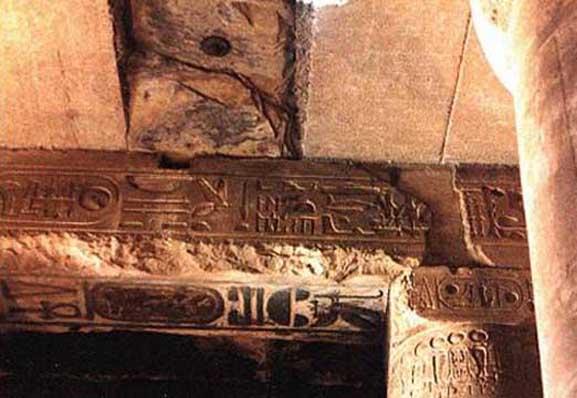
I took these images while visiting Egypt in December 2000.
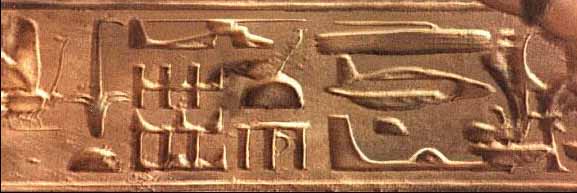
From this images we see many craft that resemble modern day flying machines.

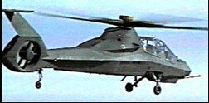
Helicopters


Submarine (1940) - or UFO?
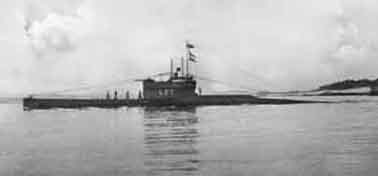
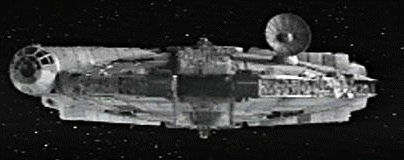


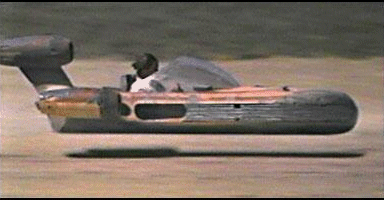
Glider


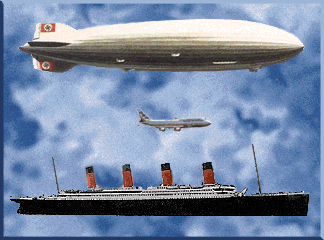
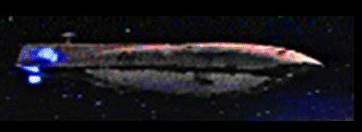
Zeppelin - Hindenburg - 1940 - UFO?
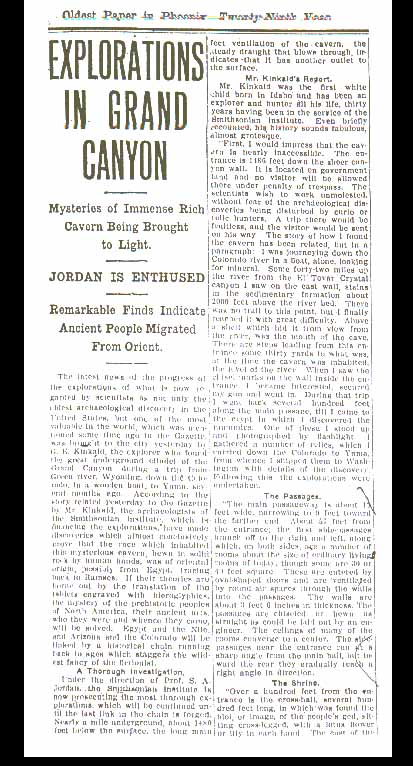
Replies